Wondering why visit Peru? Or is it already on your bucket list, and do you need Peru travel tips to get started? Then you are at the right spot. In this travel guide, I have included all the detailed information, and insights from our trip experience to get you ready in no time!
Why visit Peru – Best Peru travel tips to get started
Bucket list Peru – Discover breathtaking treks and vibrant wildlife!
Traveling around Peru is by far the most beautiful journey I have ever experienced. It’s justifiably a dream destination for many, as it has breath-taking scenery, rich culture, great cuisine – and it’s home to one of the seven wonders of the world.
In short, it’s a country that absolutely needs to be on your South America bucket list. In this Peru travel guide, I will take you on a journey of a lifetime through the Peruvian mountains and desert, with hikes through the Amazon rainforest and towards Machu Picchu.
To really discover Peru you actually need several months, but I’ll give you the highlights for an unforgettable, once-in-a-lifetime trip throughout this incredible country.
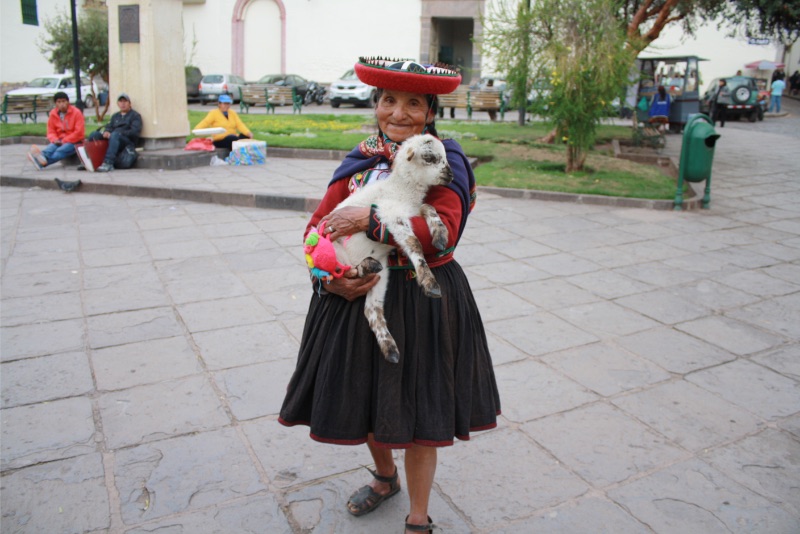
** Disclaimer: This post contains affiliated links which means that purchases made through these links reward Bey of Travel a small commission without any additional charge for the purchaser.**
Why visit Peru?
Peru should definitely be on your travel bucket list. It is a destination that I would love to go back to.
You must visit Peru for the following reasons:
Peru for history lovers
Peru is home to centuries-old cultures from the Incas to Nazca Lines. Plus the Machu Picchu is a UNESCO World Heritage Site and one of the New Seven Wonders of the World, which must not be missed!
Inca ruins are one of the ancient sites that must be explored by any history and culture lovers. The impressive ruins include Sacred Valley and Machu Picchu which are a must-add to every travel bucket list.
Other than the Inca ruins, there are ancient sites in the city of Chan Chan (in the north), and also at the touristy Lake Titicaca and the city of Puno (southern side).
Peru for outdoor and nature lovers
To access ancient sites camping and hiking are essential. Imagine walking on the trails from past centuries. I am sure that you love to hike the classic Inca Trail.
You can also climb Rainbow Mountain. It’s famous for – you can probably guess – its natural, multi-colored beauty. It has only recently been discovered but is fast becoming one of THE places to visit in South America.
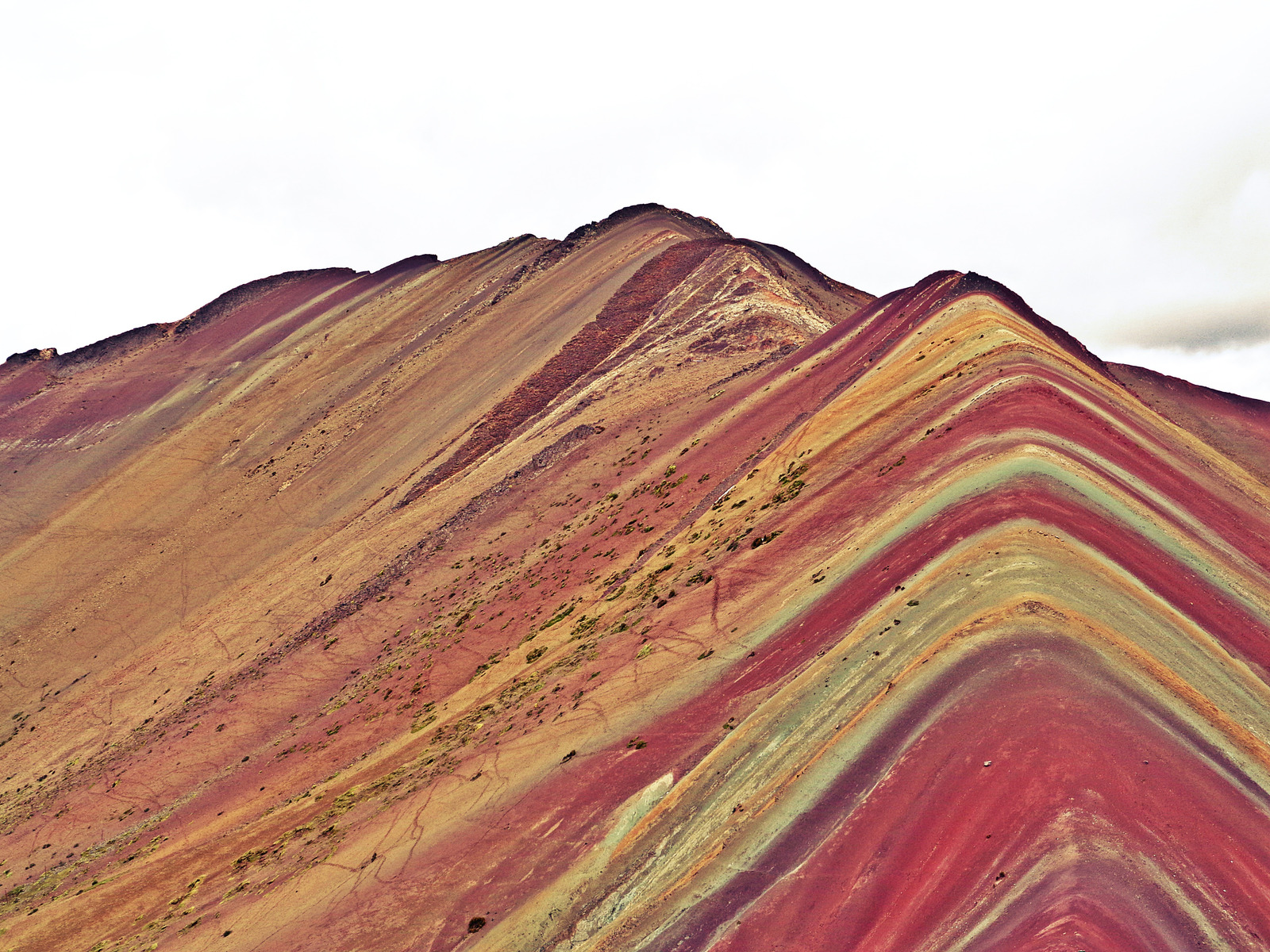
Visit Peru for stunning landscapes
Enjoy stunning landscapes in Peru by embarking on train rides like the Belmond Andean Explorer, which runs from Cusco to Arequipa, and the Belmond Hiram Bingham, which climbs Machu Picchu.
There are two palaces on wheels, which are considered to be amongst some of the best train journeys in the world, traversing one of the globe’s most photogenic landscapes.
Don’t miss the Colca Canyon, which is the deepest in the world, and the largest lake in the South American region.
Peru for foodie lovers
Did you know that Peru has been chosen as the World’s Best Culinary Destination (World Travel Awards) for the last five years in a row?
You can learn and appreciate the local culture, and traditions through culinary and gastronomy. The taste and aroma of Peruvian dishes are a combination of Spanish, African, Japanese, and Italian flavors. The dishes are unique and very flavorful.
I have included top food and drinks options below – so don’t miss that!
Peru for beach lovers
Peru has the Pacific Ocean on one side, and it is well known for its beaches. Beaches in Peru are known for surfing as well, and this includes places like Costa Verde and Punta Rocas.
Not into surfing? No problem! Grab a drink, and a beach mat and soak in the sun at the Punta Hermosa, and Santa María.
Peru for artistic work
When in Peru you will love the fabrics and textiles. Textiles are one of the obvious works of art and also one of the easiest to identify and bring back home.
You can buy them as a scarf, or a nice sweater!
Then there are other souvenirs like wood carvings, canvas, and unique paintings, handmade jewelry, etc.
These souvenirs in the form of handicrafts are handed down through generations – filled Peruvian history, and skill work.
Now here are the Peru travel tips to get you started!
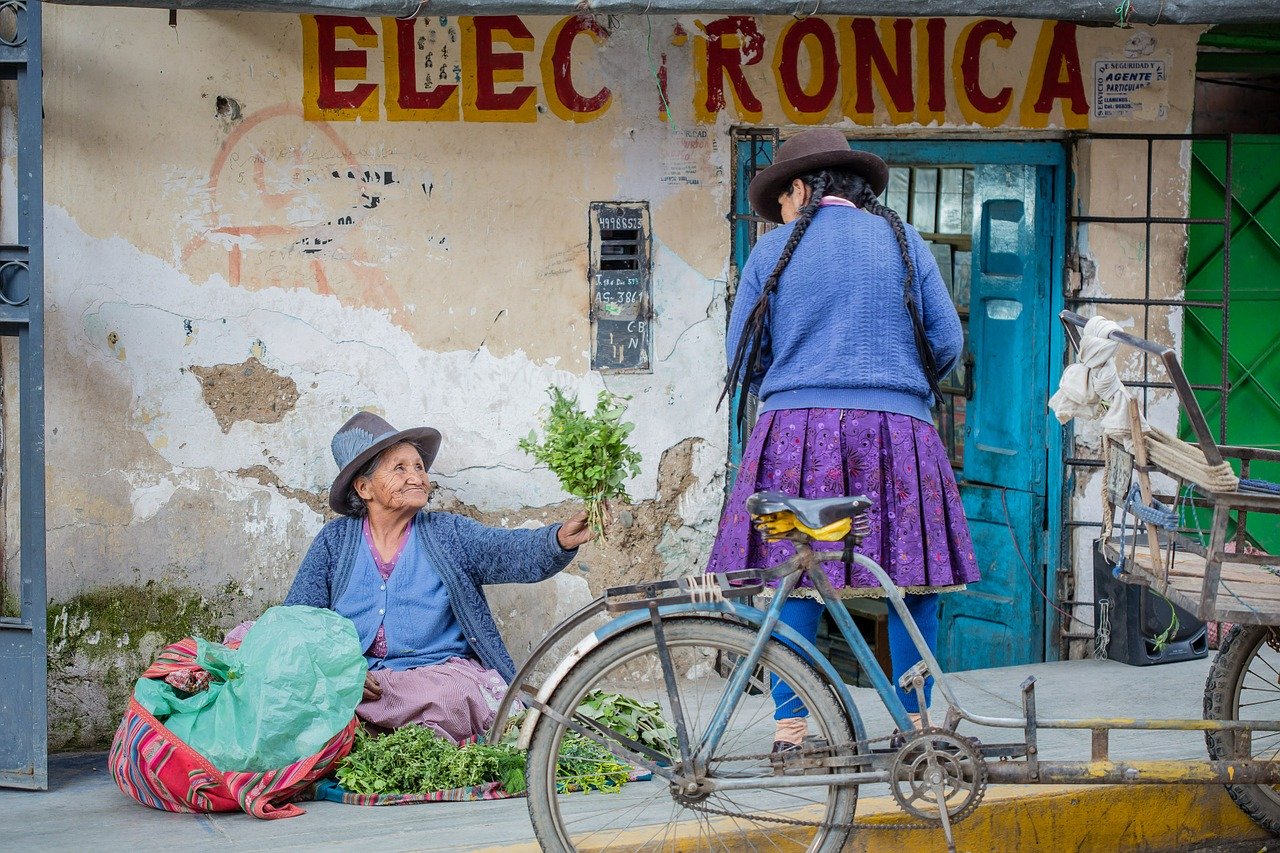
Important travel tips for Peru: Know before you visit Peru
Here are some of the important Peru travel tips and facts that you need to know
- Spoken language: Spanish is the official language of Peru, and also it is most widely spoken, followed by Quechua and Aymara. It is important to note that outside of the touristy areas, English is not widely spoken.
- Currency: Peruvian Sol
- Capital: Lima
- Population: Estimated 32 million; almost a third live in the capital city.
- Peruvian Amazon: Over 60% of the country is covered in the Amazon Rainforest – the largest area after Brazil.
- National dish: Roasted guinea pig (cuy) – around 65 million are eaten each year!
- Native product: Potatoes are native to Peru. There are over 3000 varieties grown in the country.
- Safety: While Peru used to have a bad reputation for crime in its major cities, the situation has improved in recent years. Today it’s a relatively safe country to travel around, but you’ll need to keep your eye on your belongings, as petty theft is still common.
- Plugs: The plugs in Peru are Type A and C. The standard voltage is 220 V, and the standard frequency is 60Hz. I recommend buying a universal adapter.
- Visas: Belgian citizens don’t need a visa, for a maximum stay of 90 days. Your passport needs to be valid for a period of six months.
READ NEXT | THE BEST HIKES IN CENTRAL CHILE
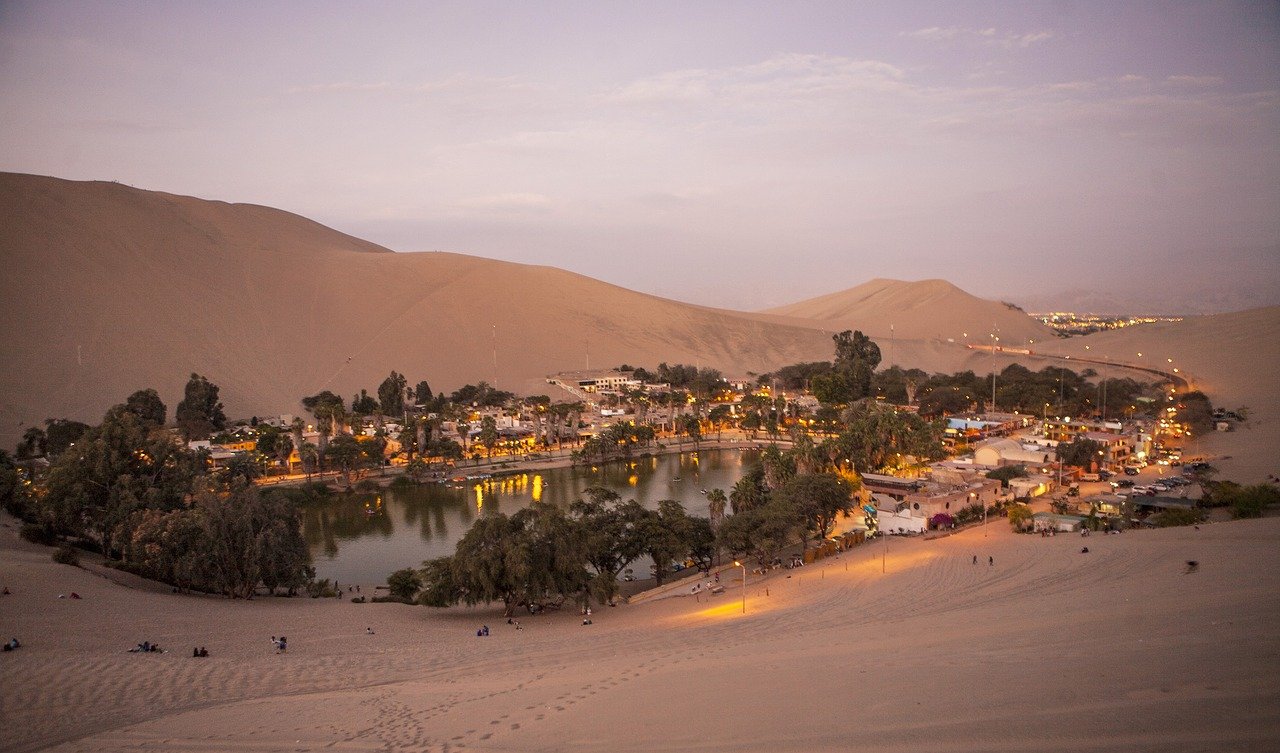
Where is Peru located?
Peru is located in western South America. It is bordered by Ecuador and Colombia in the north, Brazil in the east, and Chile in the south. In the south and west, there is the Pacific Ocean as well.
How to get to Peru?
The most important and accessible airport is located in the capital Lima. It takes around 15 hours to get here from Belgium.
After the long flight, a night in Lima is certainly not a superfluous luxury. Although not many tourists stay in this city, it’s certainly a good idea to take some time to relax and come to your senses.
When is the best time to visit Peru?
The optimum time to visit Peru is during the dry season – which is from May to September.
This is also perfect if you are planning to go for a trek.
The summer season is from December to March, and although it is the warmest it is also the wettest time. There are frequent rain showers all day every day during this time.
In April and October, the weather can be unpredictable with varying conditions.
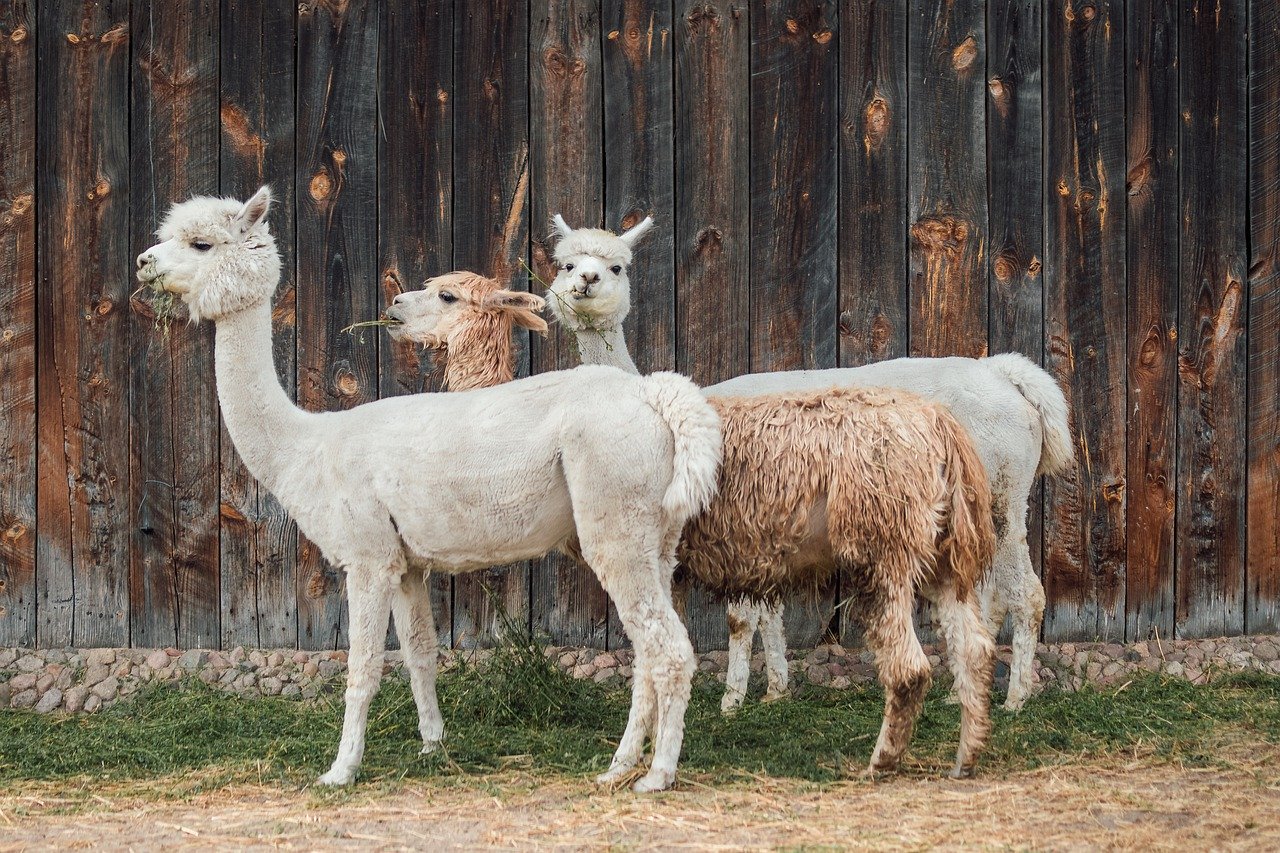
What to pack for Peru?
Keep in mind that all seasons are quite distinct in Peru, and particularly the wet season versus dry seasons are very evident. Here is a quick list of items to pack for your trip and trek to Peru!
- Waterproof jacket: I highly recommend a lightweight waterproof jacket at all times of the year, particularly in the summer season.
- Long pants: Wear and carry full-length pants – it great all year – be it summer or rainy season. If you can find something with a waterproof coating, opt for that
- T-shirts or tops: Carry a few shirts, depending on the trip duration
- Sweatshirt: For comfortable, effortless wear!
- Hiking shoes: A pair or two of hiking shoes/boots
- Walking shoes: Add comfortable walking shoes for exploring towns/cities
- A hat or cap: For sun protection
- Sunglasses
- Other essentials: Don’t forget your camera gear, adaptor, cosmetics, and medications!
- Don’t forget travel insurance and credit cards while traveling to Peru
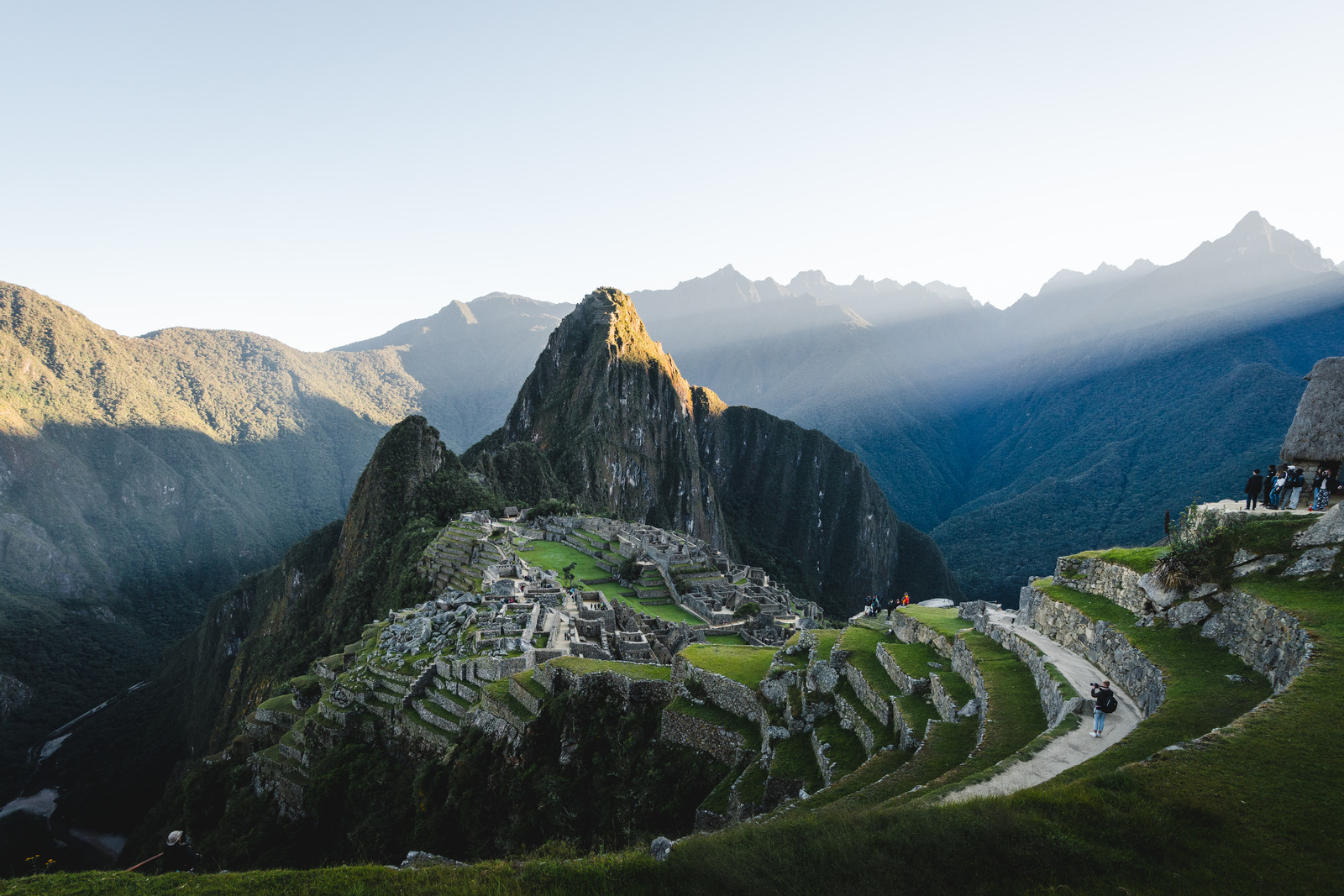
What to visit in Peru? Top places to visit in Peru
Here are some of the most beautiful places in Peru that you must visit, and add to your itinerary
Cusco
Cusco is a charming with plenty of lovely things to do.
From Lima, we traveled to Cusco by bus to get used to the altitudes (which was an absolute necessity, as we had to get ready for our Salkantay trek). It’s uncertain whether you’ll be affected by altitude sickness, as it affects people in different ways. Typical symptoms include a mild headache, shortness of breath, and tiredness. All you can do is take it easy and make sure you stay hydrated.
Top things to do in Cusco
- Have a coffee at Plaza De Armas. You’ll cross the central square often during your visit to Cusco. It is the ideal place to dive into the culture, and just watch people from a terrace.
- Visit the authentic San Pedro market – simply a feast for all your senses.
- Visit Koricancha, the Golden Temple of the Sun, and Convento.
- Hang out in San Blas, away from the central tourism-focused areas. Yes – you’ll need to walk up the hill! (But no worries, you’ll survive.) This area is pretty and less busy. You’ll find great views over Cusco, fun bars, cozy coffee shops, great restaurants, and clothing and jewelry shops.
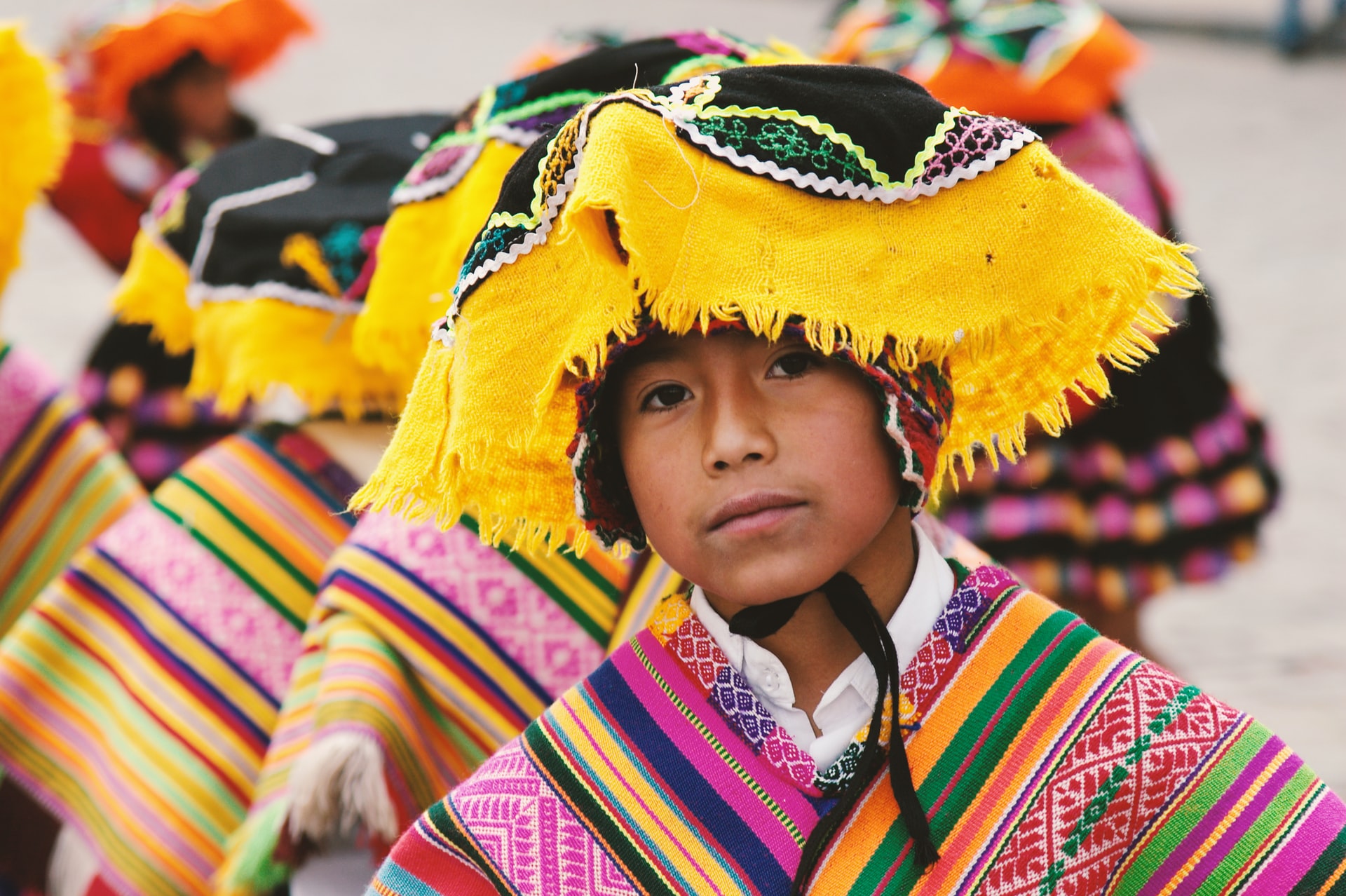
Read next | The best hikes in Central Chile
Where to stay in Cusco?
The prices of hotels in Cusco are considerably higher than in other parts of the country, especially during the high season. Both hostels and hotels are often overpriced. Don’t wait too long to book your accommodation, and keep in mind that it’s best to find something in the cozy old part of town.
Here are some of my suggestions:
- Selina Plaza De Armas Cusco – It’s handily located in the heart of the old town in Cusco. There are hotel rooms or dorms for a reasonable price. More info and bookings here.
- Hotel Plaza de Armas Cusco – This hotel is a bit more luxurious. The breakfast is delicious, and the rooms are super comfortable. More info and bookings here.
- JW Marriott El Convento Cusco – For ultimate luxury, stay at JW Marriott. A five-star hotel that does not fall short. More info and bookings here.
- Kokopelli Hostel Cusco – A beautiful hostel with dorms and private rooms located at the beach! More info and bookings here.
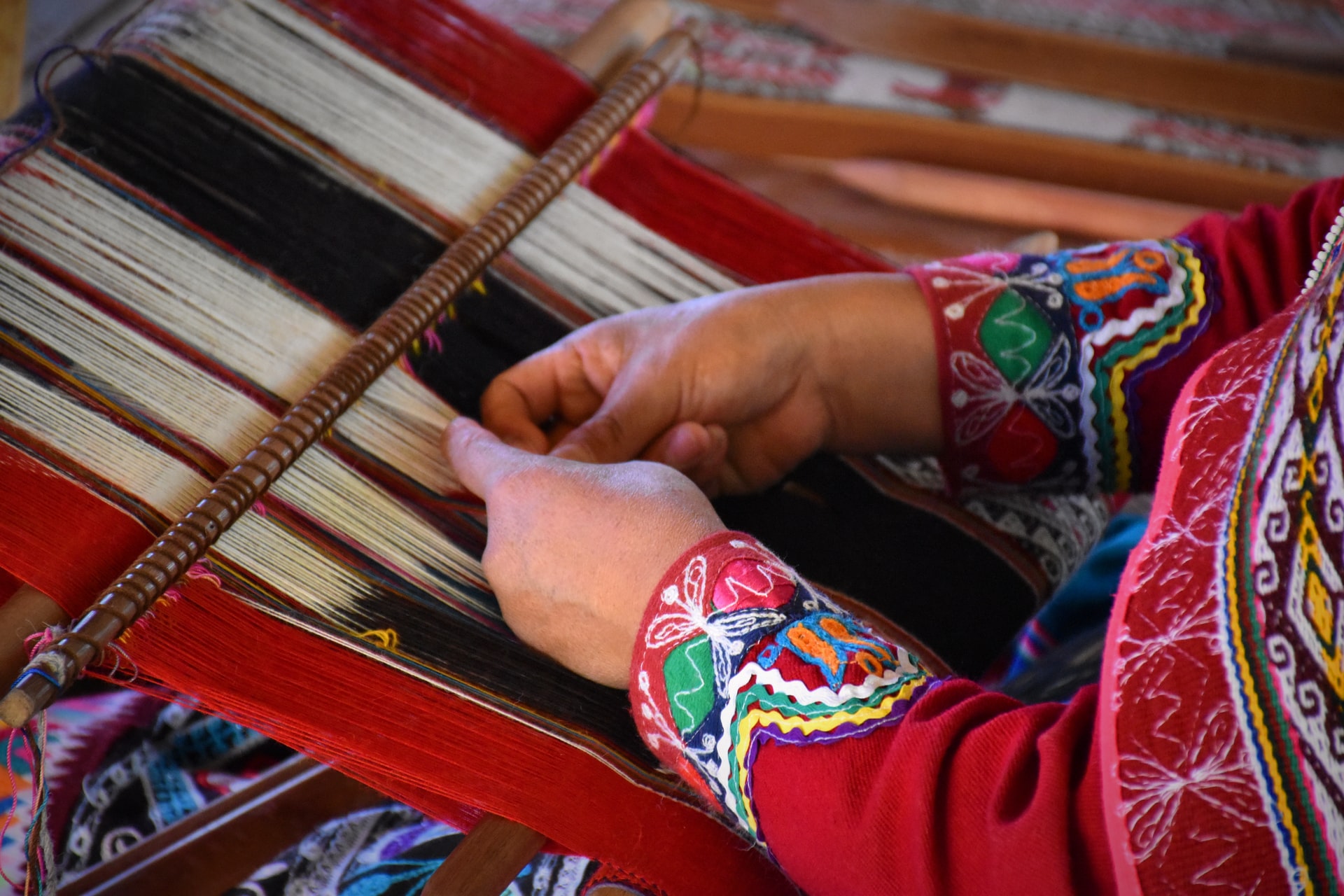
Arequipa
Arequipa is Peru’s second-largest city. With a population of over 800,000 people, it’s a wonderful city to wander through – and it’s arguably the most beautiful city in Peru.
There are plenty of lovely options for eating out and the climate is very enjoyable.
There are a lot of tours and sightseeing options in Arequipa.
The main attraction in the Arequipa area is the picturesque Colca Valley, an area of incredible beauty. It’s one of the world’s deepest canyons (reaching a depth of 4,160 meters!) and it is home to the famous Andean Condor birds.
Top things to do in Arequipa
- Go rafting on the Rio Chill
- Visit San Camilo Market
- Hang out on Plaza the Armas, and have a meal in one of the restaurants hidden away on the second floor to fully enjoy the view
- Discover San Lazaro, Arequipa’s oldest neighborhood
Where to stay in Arequipa
Here are my top suggestions of places to stay during your time in Arequipa:
- Arequipay Backpackers Downtown – Only an 8-minute walk from Plaza de Armas, this hostel has large doubles and really good dorms – plus free breakfast, kitchen, great wifi, and a brilliant rooftop terrace. More info and bookings here.
- Palla Boutique Hotel – A beautiful boutique hotel just 400 meters from the center. More info and bookings here.
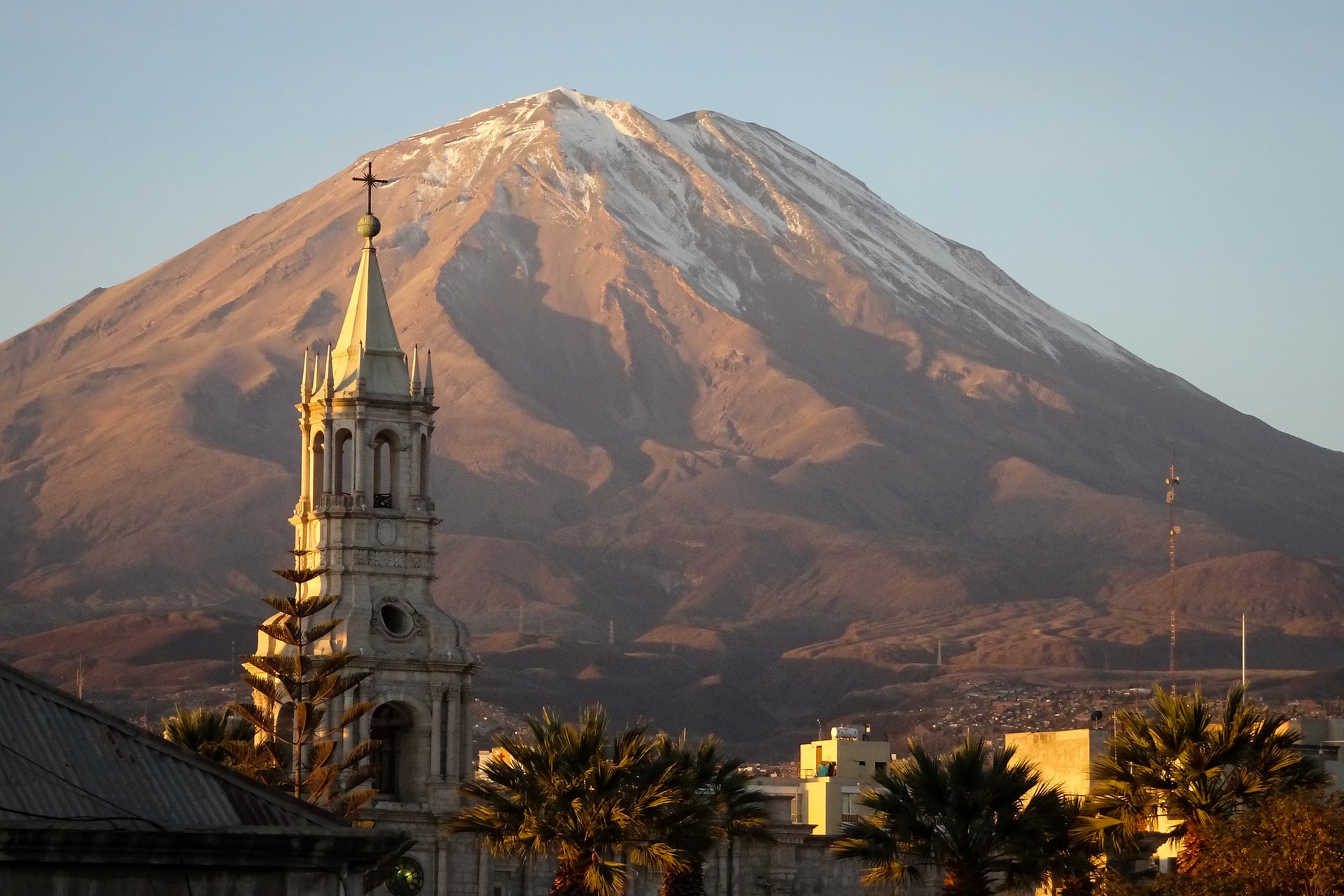
Arequipa
We continued our journey to Arequipa, Peru’s second-largest city. With a population of over 800,000 people, it’s a wonderful city to wander through – and it’s arguably the most beautiful city in Peru. There are plenty of lovely options for eating out and the climate is very enjoyable.
There are a lot of tours and sightseeing options in Arequipa. The main attraction in the Arequipa area is the picturesque Colca Valley, an area of incredible beauty. It’s one of the world’s deepest canyons (reaching a depth of 4,160 meters!) and it is home to the famous Andean Condor birds.
Where to stay in Arequipa
Here are my top suggestions of places to stay during your time in Arequipa:
- World Backpackers hostel – Only an 8-minute walk from Plaza de Armas, this hostel has large doubles and really good dorms – plus free breakfast, kitchen, great wifi, and a brilliant rooftop terrace. More info and bookings here.
- Palla Boutique Hotel – A beautiful boutique hotel just 400 meters from the center. More info and bookings here.
Top things to do in Arequipa
- Go rafting on the Rio Chile
- Visit San Camilo Market
- Hang out on Plaza the Armas, and have a meal in one of the restaurants hidden away on the second floor to fully enjoy the view
- Discover San Lazaro, Arequipa’s oldest neighborhood
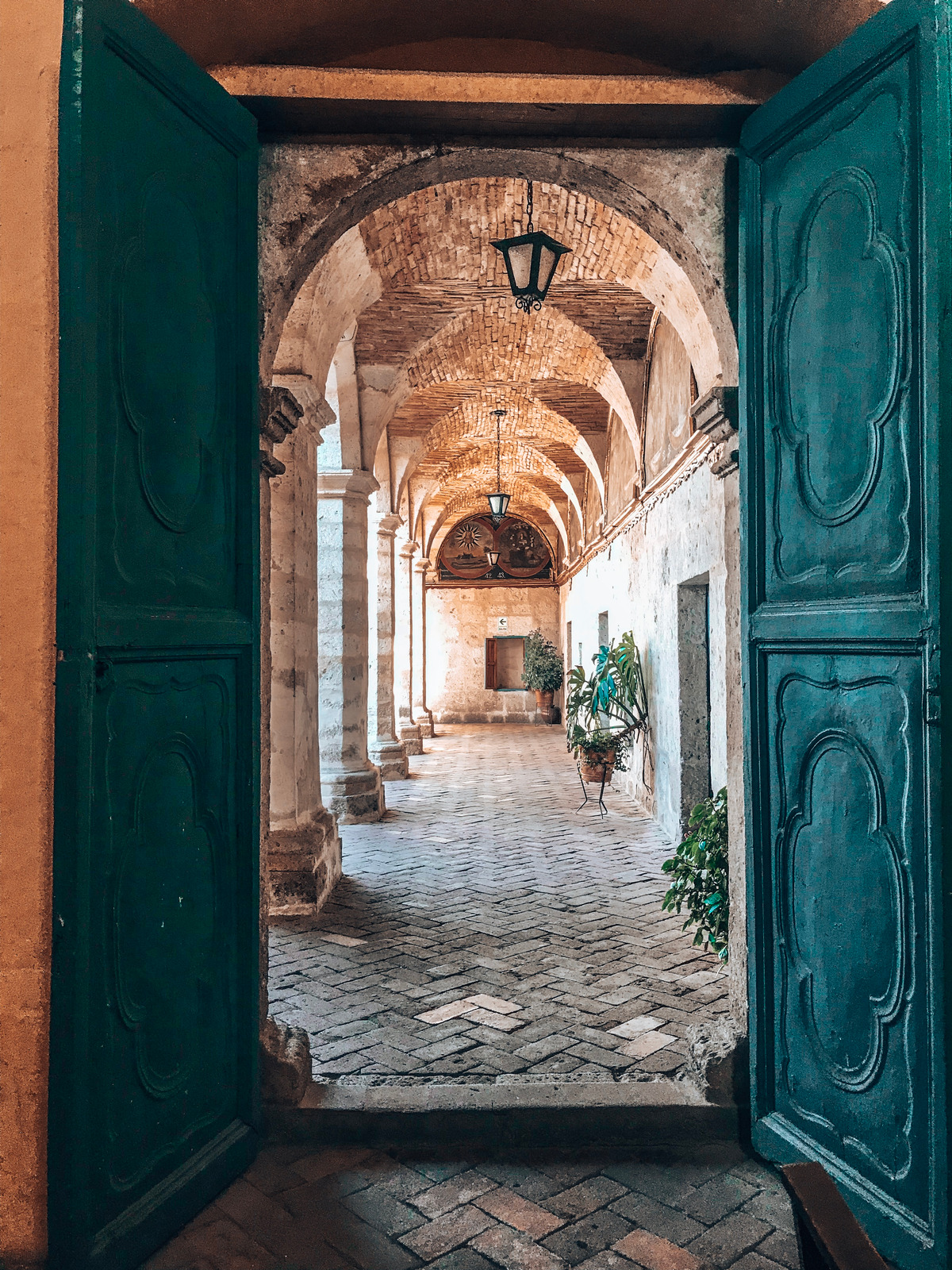
The Salkantay Trek
Planning and preparing for the Salkantay trek during your stay in Peru? Here’s all the essential information you’ll need to know. After the Inca Trail, the Salkantay Trek is the second most popular hike to Machu Picchu – and a bonus is that it’s a lot less crowded. This beautiful route is perfect for adventurers and active hikers.
The trek is famous for the Salkantay Pass: a 4600-meter high pass along the Salkantay glacier that must be crossed. You’ll walk through vast magical landscapes, from a snow-covered mountain paradise to a tropical jungle filled with a wide range of animals, plants, and flower species.
- Duration: 5 days
- Total distance: 75 kilometers
- Average walking time per day: 8-9 hours
- Highest mountain peak: 4600 meters
- Price: €500 per person (a lot of money but worth every penny)
- Age restrictions: Children under 14 years old are not allowed to do the trek.
No matter how beautiful (and tiring) the hike may be, the real reason for its popularity lies at the end of this five-day trek.
At the end, you’ll walk through the Sun Gate and get that first magical glimpse at the ruins of Machu Picchu. Only Salkantay trek hikers have early access to the Sun Gate at sunrise – which is what makes this particular hike feature on so many Peru bucket lists.
Book the Salkantay trek here.
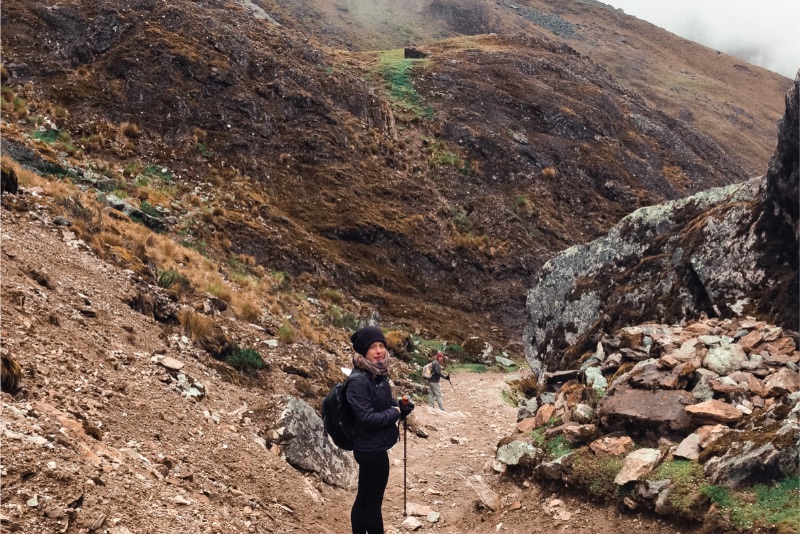
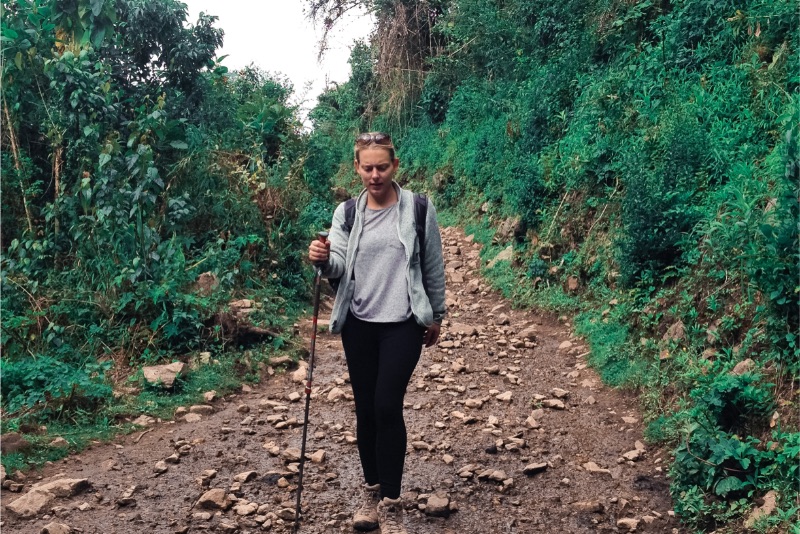
Do you need to book the Salkantay Trek tour in advance?
The Salkantay Trek is definitely one of the very best trekking adventures that you’ll find in Peru (and in the whole continent of South America). So yes, booking the Salkantay in advance is absolutely necessary.
Before booking, ensure you know what you’re getting yourself in for. Do not underestimate the tour – the trail can be heavy at times and the altitude certainly does not make it any easier.
I will always remember the last day of the trail when we saw Machu Picchu for the first time from behind the clouds. Tears ran down my cheeks – a combination of pain and tiredness, but mostly because of the pure beauty!
In that moment you realize why you started the hike in the first place, and you fall asleep truly satisfied. The next morning you get up at 4 o’clock in the morning for the final effort – the 1800 steps climb to the top of this Seventh World Wonder.
More travel tips for Salkantay Trek
- Don’t forget to bring your international passport. When you leave Machu Picchu, you can put a stamp of the World Wonder in your passport.
- Take pills for altitude sickness, just in case.
- Wear proper clothing. The temperature throughout the tour varies from ice cold to sweltering hot, so put on layers that you can easily take on and off.
Of course, there are other ways to get the Machu Picchu, but I recommend you to do the tour with a guide! If not, ensure you buy your Machu Picchu tickets at least 6 months in advance. Tickets are sold on the official government website, can be purchased with credit or debit cards, and are NOT sold at the entrance gate.
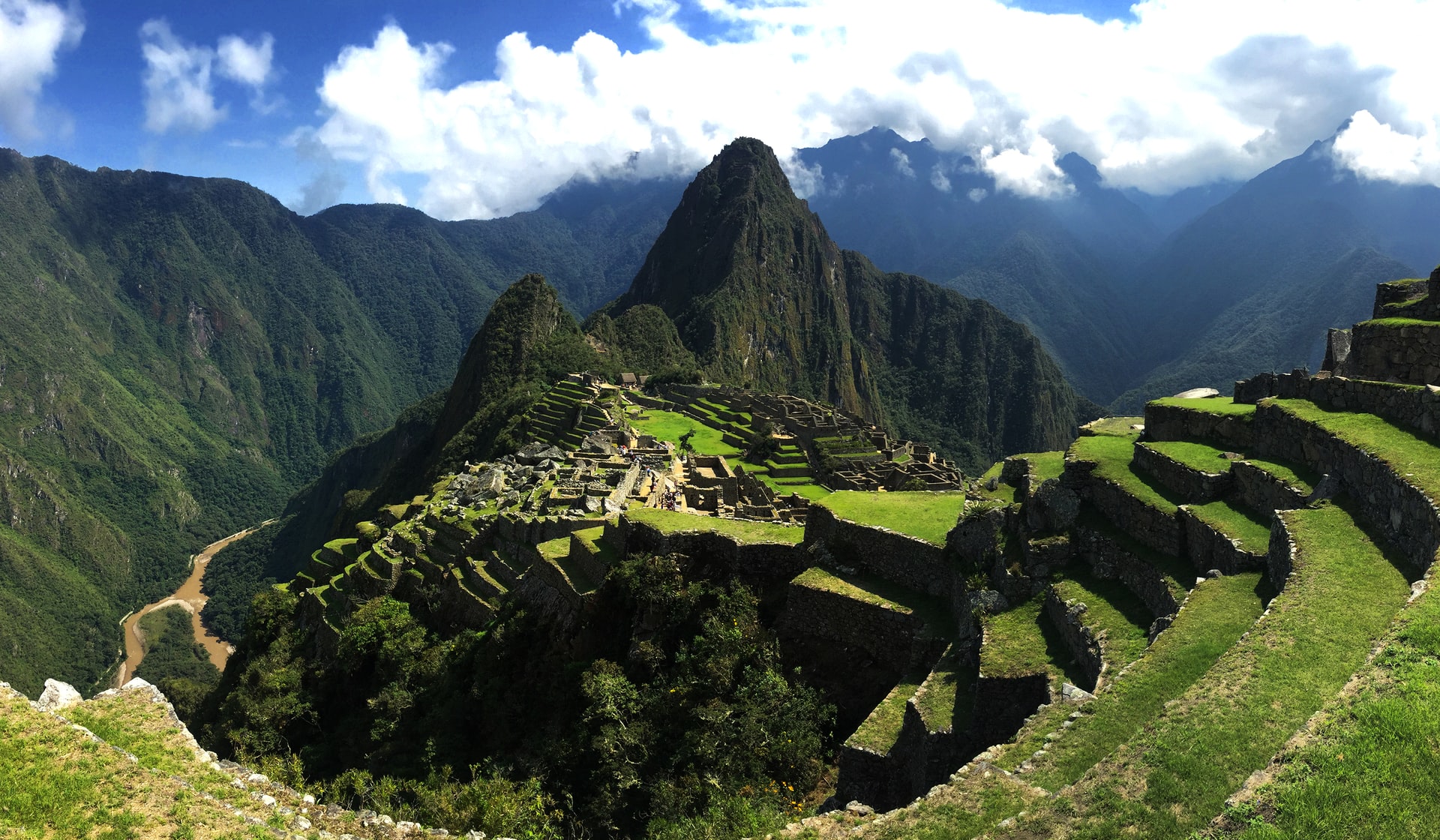
Puerto Maldonado
After the hike, we went through the rainforest to Puerto Maldonado for three days. This area is most popular with travelers from June to November. There’s less rainfall then, which means you won’t have to worry about trails closing or the cold wet season temperatures.
Top things to do in Puerto Maldonado
- Birdwatching at the Clay Lick – set your alarm early and head out on a boat to search for thousands of parrots.
- Take a jungle walk during the night. Go on an adventure in the jungle with a guide – you’ll be surprised how many animals are super active at night.
- Watch out for spiders! When we arrived in the jungle, I was so smart and left our luggage open for three days. When we left, I went to pack up our backpack and spotted a tarantula in our pocket. I screamed so hard that I alarmed the entire resort and a guide was soon at our cabin. He picked up the spider with his hands (without protection!) and put it straight back out into nature.
Where to stay in Puerto Maldonado?
We stayed in lodges and enjoyed the beauty of nature. Butterflies, macaws, sloths, porcupines, crocodiles, tarantulas, snakes, anacondas, and jaguars all live in the forest.
We did different day trips and enjoyed every second on the spot.
Book your eco-lodge here.
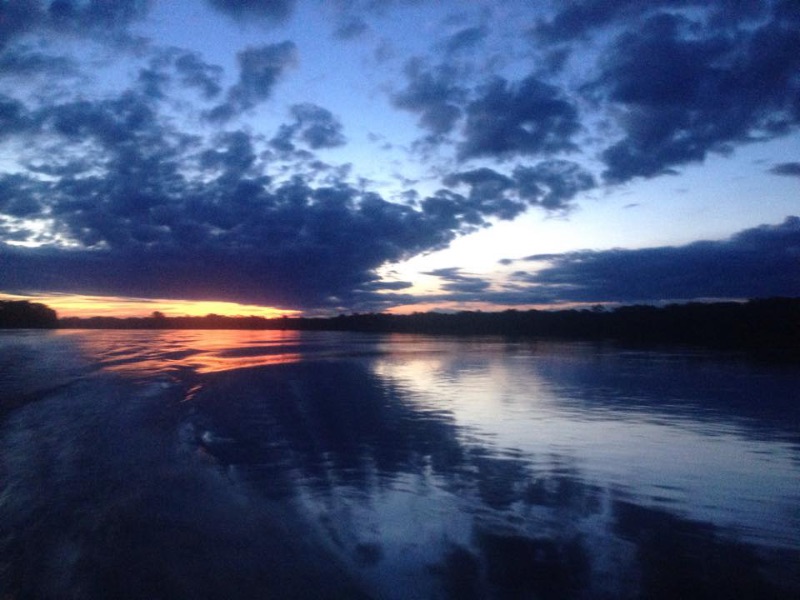
Titicaca
Next on the list is Titicaca.
Lake Titicaca is one of the largest lakes in South America and is considered to be the birthplace of the Incas. It is also one of the popular touristy places in the country!
But personally, I thought Lake Titicaca didn’t really add value to our trip. If you’re short on time, you can easily skip this. I feel that Lake Titicaca is often hyped by travelers and tourists.
Where to stay in Titicaca?
You can easily find huts and lodges around the lake. Rooms start at $25 USD.
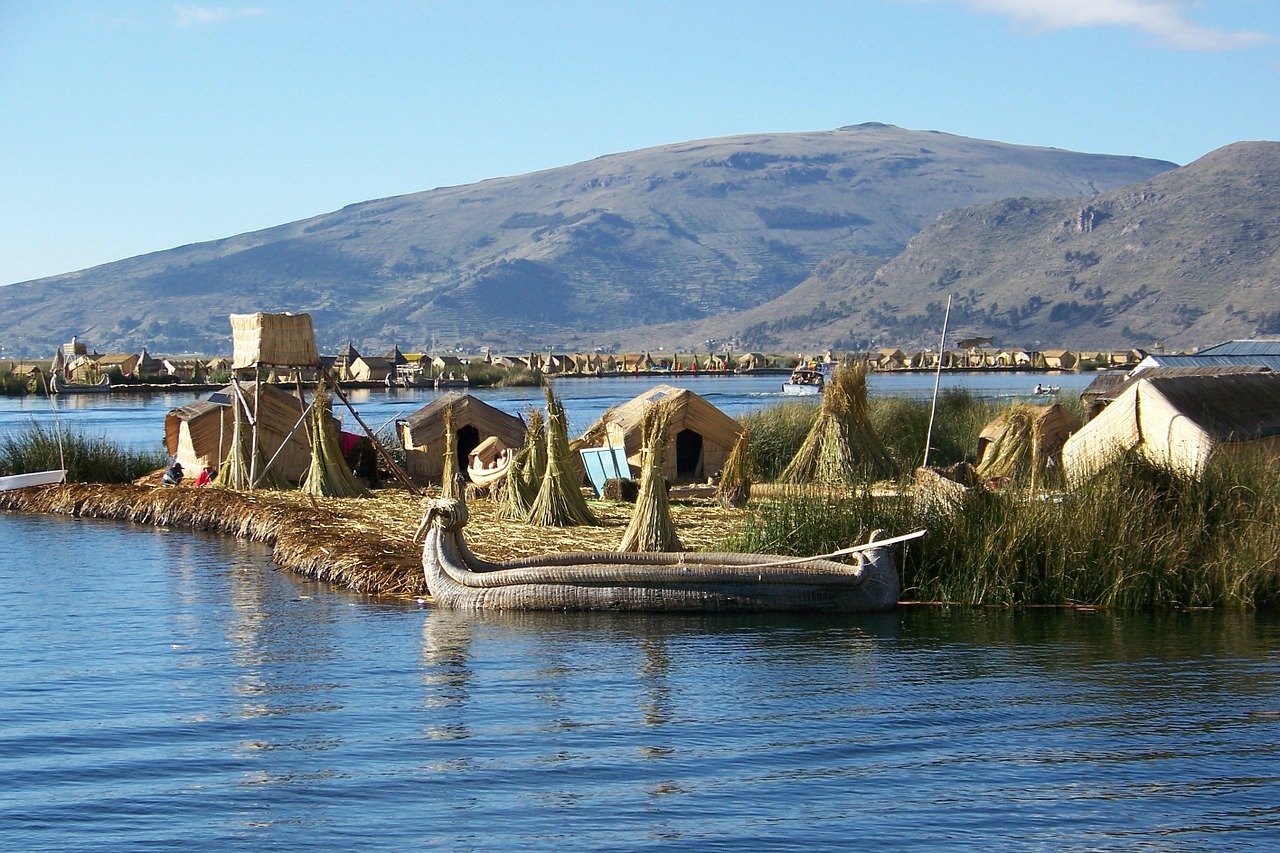
Huacachina
Huacachina is also a very tourist-focused area. It’s built at an oasis where you can sandboard and ride a buggy through the desert. Along with the desert, there is the waters of Huacachina Lagoon, with balmy palm trees!
Huacachina is a nice place to hang out and stay for the weekend!
Where to stay in Huacachina?
Ecocamp Huacachina is a nice place to stay in the area. It is dotted with a restaurant and a pool where you can grab a bite to eat and drink!
Click to find more information here.
Paracas
Although it’s fun to do, there are much nicer spots to visit during your stay in Peru – like Paracas, for example. Paracas is home to an astounding variety of sights, activities, and attractions. Be sure to visit the red beaches of Paracas, or rent a bike and cycle through the Paracas National Reserve.
The main reason why most travelers descend to Paracas is to go on an Islas Ballestas tour (and this should definitely be on your Peru bucket list).
While in Paracas, grab lunch at Pukasoncco. The menu focuses on classic Peruvian fares like Seco de Carne and Arroz con mariscos – but what really sets this place apart is its extensive menu of vegan, vegetarian, and gluten-free options. A true rarity in Peru.
Where to stay in Paracas?
We stayed at Hotel Paracas, a Luxury Collection Resort – The best spot if you are in need of some relaxing days! The luxury pool and amazing staff will make you forget your worries in no time! More info and bookings here.
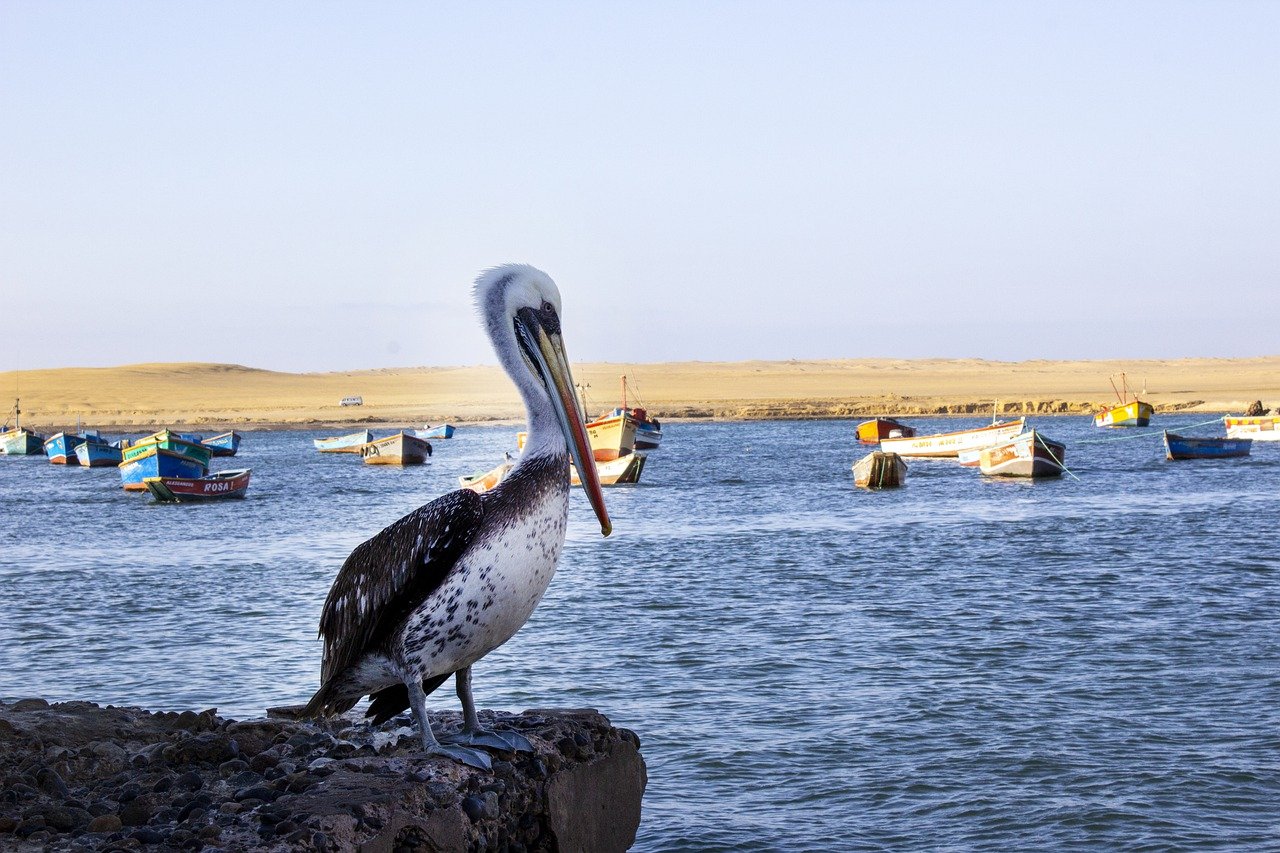
Islas Ballestas
Islas Ballestas is located in the Pacific Ocean and is home to penguins, sea lions, and many other bird species. With a bit of luck, you may even spot humpback whales here! The islands enjoy protected status to preserve the ecosystem of the extraordinary – but fragile – populations of birds and mammals that call the islands home.
There are no permanent human residents but frequent boat tours pass by, giving visitors a chance to view the wildlife and incredible natural beauty.


What to eat in Peru? Guide to Peruvian food
Peru is a great place for foodie lovers. Here is what you must try in Peru:
- Lomo Saltado: Lomo Saltado is a stir fried beef dish with rice. It is one of the popular Peruvian cuisines!
- Causa: Potato Casserole
- Roasted guinea pig (cuy) – around 65 million are eaten each year!
- Aji de Gallina: Another dish prepared with peppers and chicken
- Papas a la Huancaina: This is a saucy delicacy of potatoes
- Rocoto Relleno: These are stuffed spicy peppers
For drinks, opt for Pisco sour. It is a Peruvian national drink, and there is also a national holiday, called the “Día Nacional del Pisco Sour” (National Pisco Sour Day). It is celebrated on the first Saturday of February every year.
I hope you find this Peru travel guide useful – and if you do pay it a visit, I hope you find it as mesmerizing and breathtaking as I did.
PIN – Peru travel tips
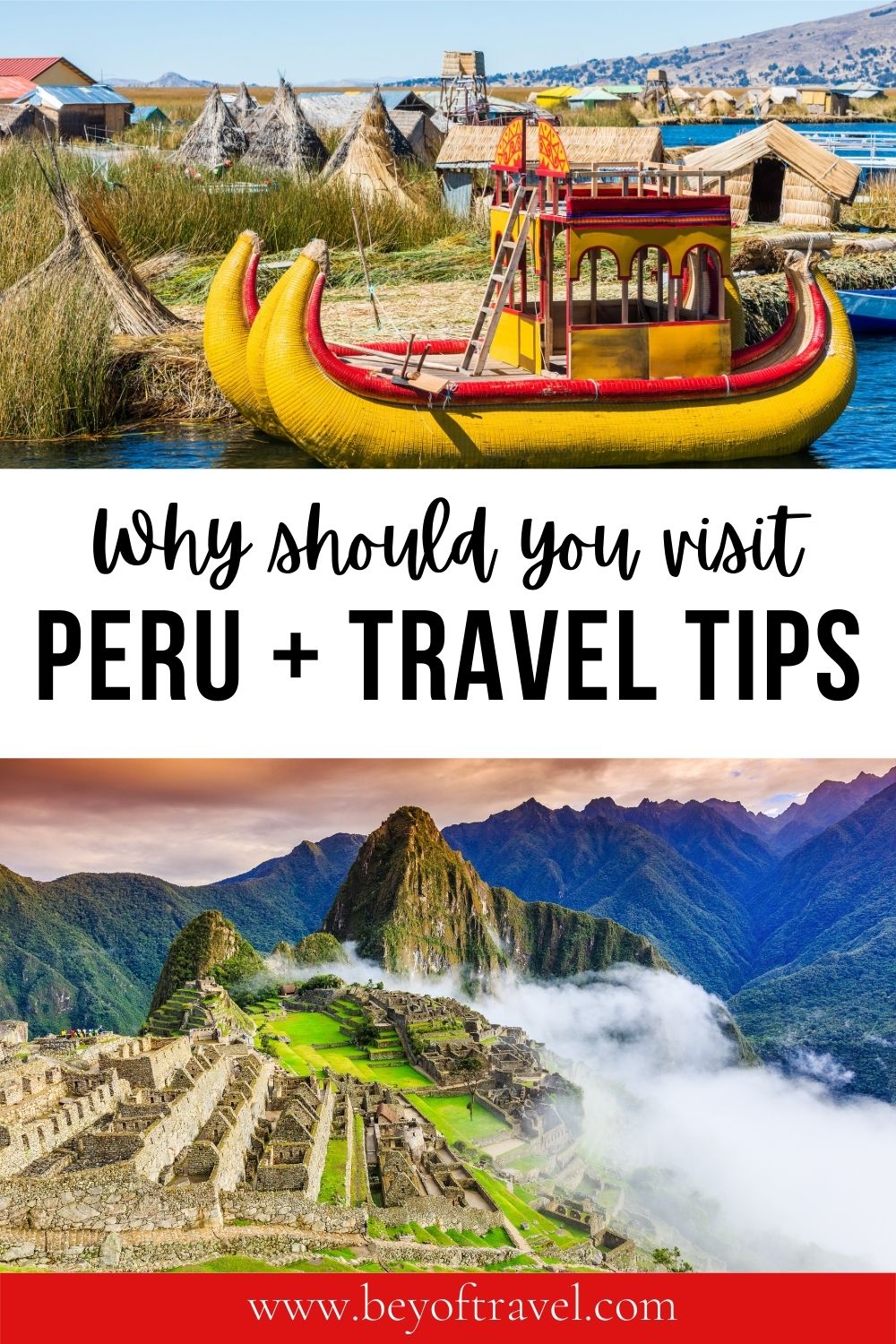
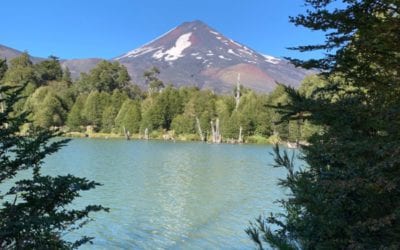
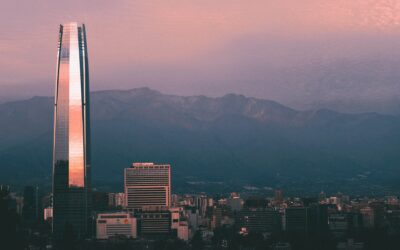
0 Comments